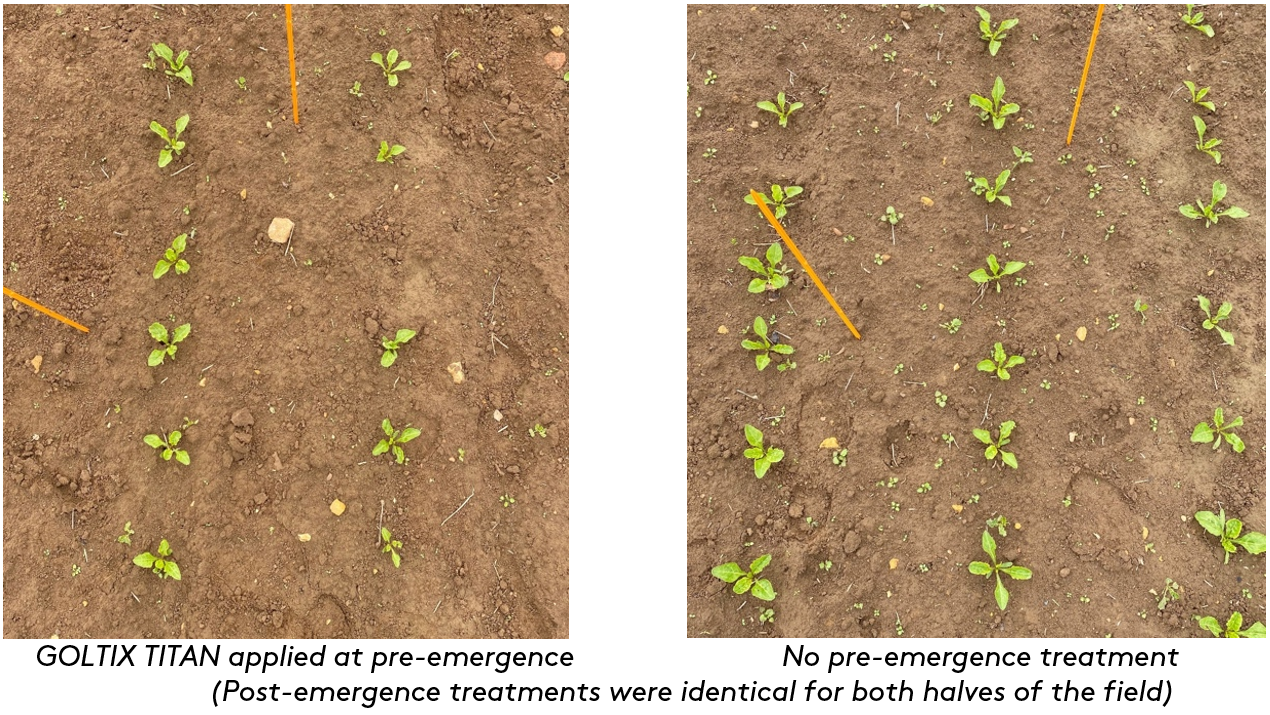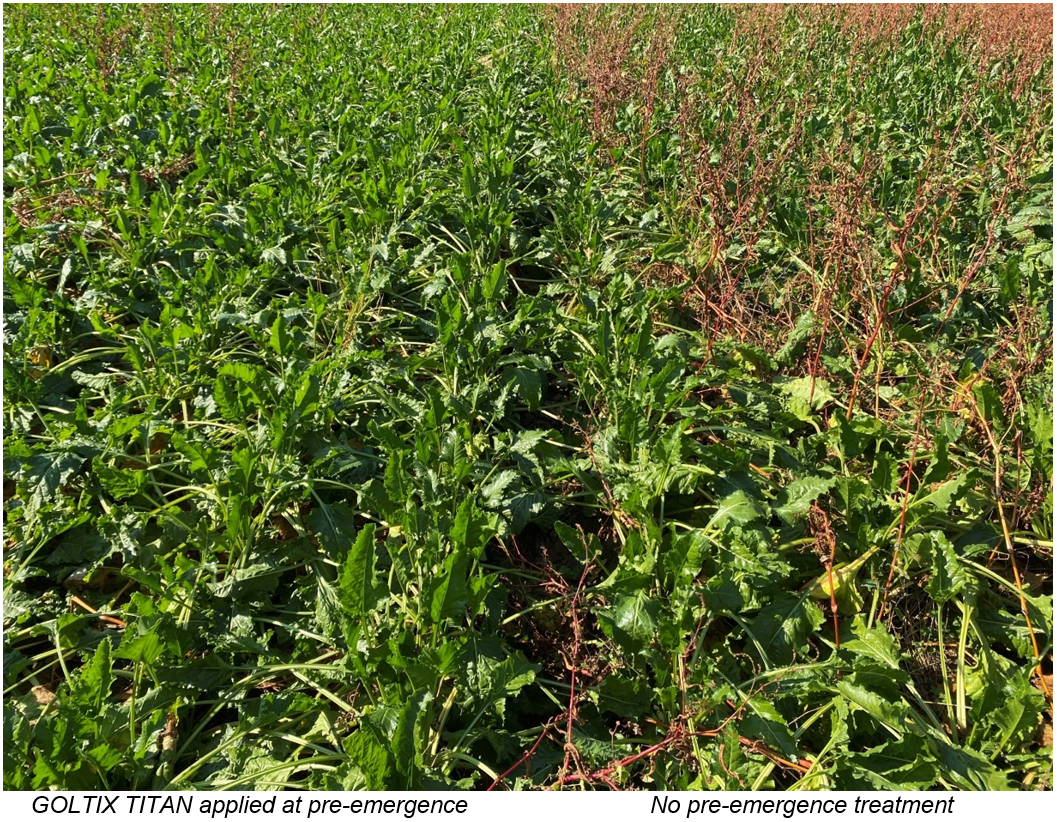
Effective weed control gives sugar beet a head start

The slow growing nature of sugar beet makes crops exceptionally susceptible to weeds that emerge early in the spring, with tall weeds posing the greatest threat to yields. Effective early season weed control is therefore essential, especially as a robust herbicide programme can deliver a 10-20% improvement in yield.
Historically, sugar beet weed control has relied predominantly on the use of phenmedipham-based herbicides. However, as agricultural practices have changed and wider rotations have become more commonplace, the range of weed species that needs to be controlled has widened.
At the same time, some key herbicides have been revoked, and legislative changes have forced phenmedipham herbicides to move to less effective suspension concentrate formulations.
As a result, growers have, by-and-large, adopted the use of two additional active ingredients – ethofumesate and metamitron – in combination with phenmedipham.
However, relying on these three active ingredients is still no guarantee of effective weed control, with growers therefore advised to implement a wider array of herbicides in tank mixes and in sequenced programmes.
Additional active ingredients approved for use in sugar beet include quinmerac, clopyralid, dimethenamid-p and propaquizafop. These give good results against many of the main yield-robbing weed species including cleavers, bindweed, black nightshade, fool’s parsley and common field speedwell.
Metamitron pays for itself
Of the four, metamitron is the easiest active to incorporate into sequenced programmes thanks to its broad label, good crop safety and ability to provide both contact and residual activity. Metamitron also partners well with quinmerac which delivers added efficacy, especially in dry conditions thanks to its useful water solubility.
The inclusion of several active ingredients adds to input costs, but products such as Goltix 70 SC (metamitron 700 g/L) and Goltix Titan (metamitron 525 g/L and quinmerac 40 g/L) will pay for themselves, especially where the weed burden is high.
Additional co-formulations such as PowerTwin (phenmedipham 200 g/L and ethofumesate 200 g/L) provide an extra layer of flexibility by enabling a residual and a contact herbicide to be applied together without the need for spray operators to spend time mixing separate products.
Falcon (100g/L propaquizafop) is also approved for use on sugar beet, giving growers access to another useful active ingredient for use all the way from pre-emergence to post-emergence (up to 60 days before harvest).
Prioritising applications
For crops which might not receive a post-emergence herbicide application at the ideal timing due to time constraints or where wet weather and heavy soils delay proceedings, a pre-emergence treatment should be prioritised.
Likewise, pre-emergence applications should also be prioritised on land with a high weed burden in order to ‘soften up’ weeds ahead of a subsequent post-emergence treatment.
Timing is key
Because modern sugar beet varieties are so quick to germinate, pre-emergence herbicides should ideally be applied within 24-48 hours of drilling and certainly within a maximum of five days after drilling.
Where an early post-emergence treatment is more appropriate (for example on soils with a high organic matter content), Goltix Titan will provide excellent activity against several of the more difficult to control weeds such as cleavers, orache and bindweed.
Pre-emergence treatments get sugar weed control off to the best start
Split field trials carried out by ADAMA have shown that the addition of Goltix Titan at the beginning of a pre- and post-emergence programme provides superior weed control compared to programmes which rely solely on contact action at post-emergence.



GOLTIX® 70 SC is a residual and contact broad spectrum herbicide based on metamitron for the control of broad leaved weeds.

GOLTIX TITAN® is a residual and contact broad spectrum herbicide based on metamitron for the control of broad leaved weeds.

POWERTWIN® is a co-formulated product of ethofumesate and phenmedipham. A residual and contact post-emergence herbicide for use on sugar beet, fodder beet and mangel.

FALCON® is a foliar acting selective herbicide with systemic activity on a wide range of grass weeds and volunteer cereals. It can be used in oilseed rape, potatoes, beet and a wide range of other broad-leaved crops.
New product alert
An additional ethofumesate herbicide which offers improved post-emergence weed control will also be available from ADAMA in 2024, having recently been approved for use in the UK… watch this space for more information in the coming months.


